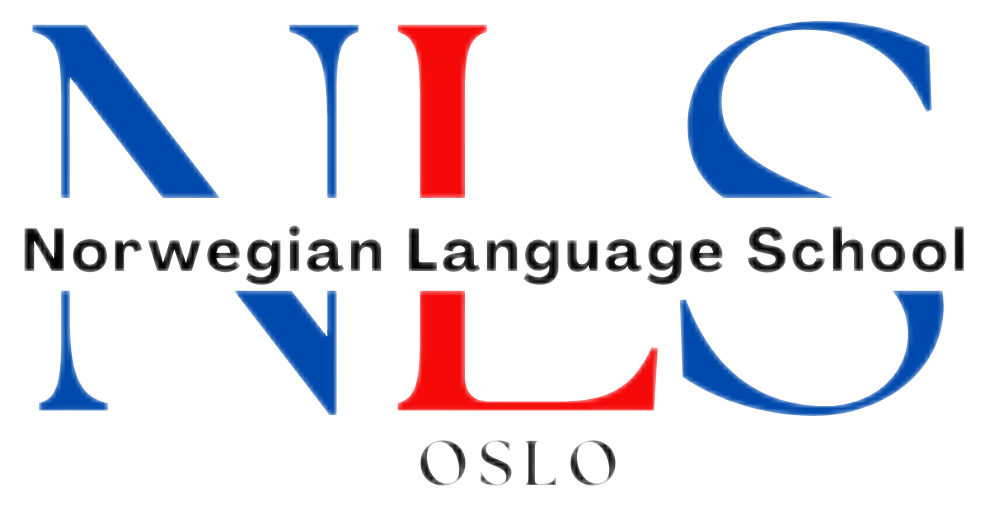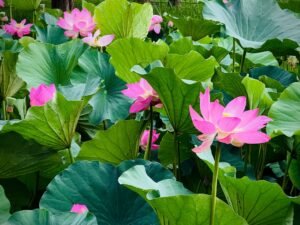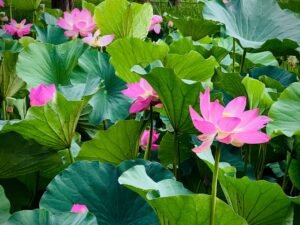

Essential Vocabulary for Navigating Norwegian Cities
Norway is a country known for its stunning natural landscapes, rich history, and vibrant cities. From the picturesque streets of Bergen to the modern architecture of Oslo, each Norwegian city has its own unique characteristics that make it worth exploring. However, for travelers who want to truly immerse themselves in the local culture and connect with the people, learning the Norwegian language is essential.
Table of Contents
ToggleBasic Norwegian Phrases for City Navigation
When visiting a Norwegian city, it’s important to know some basic phrases to navigate your way around. Greetings and introductions are a good place to start, as they will help you establish a connection with the locals. Common greetings in Norwegian include “Hei” (hello) and “God dag” (good day).
Asking for help and directions is another crucial skill when navigating a city. Phrases such as “Unnskyld meg” (excuse me) and “Kan du hjelpe meg?” (can you help me?) will come in handy when you need assistance. Additionally, knowing how to ask for directions is essential. Phrases like “Hvor er…?” (where is…?) and “Hvordan kommer jeg dit?” (how do I get there?) will help you find your way around.
Transportation Vocabulary for Getting Around
Norway has a well-developed transportation system that makes it easy to get around the cities. Common transportation modes include buses, trams, trains, and ferries. To navigate public transportation, it’s important to know some key vocabulary. For example, “billett” means ticket, “buss” means bus, “tog” means train, and “ferge” means ferry.
When buying tickets, you may need to interact with ticket agents or use ticket machines. Knowing phrases such as “En billett til…” (one ticket to…) and “Hvor mye koster det?” (how much does it cost?) will help you purchase the right ticket. Additionally, if you need to ask for directions or find your way around, phrases like “Hvor er busstoppet?” (where is the bus stop?) and “Hvordan kommer jeg til togstasjonen?” (how do I get to the train station?) will be useful.
Ordering Food and Drinks in Norwegian
Norwegian cuisine is known for its fresh seafood, hearty stews, and traditional dishes. When dining out in a Norwegian city, it’s helpful to know some basic vocabulary for ordering food and drinks. Common Norwegian dishes include “lutefisk” (dried fish), “rakfisk” (fermented fish), and “fårikål” (mutton stew).
To order food and drinks in restaurants and cafes, knowing phrases such as “Jeg vil gjerne ha…” (I would like to have…) and “Kan jeg få en kopp kaffe?” (can I have a cup of coffee?) will be useful. Additionally, if you have any dietary restrictions or special requests, it’s important to communicate them. Phrases like “Jeg er vegetarianer” (I am a vegetarian) and “Jeg er allergisk mot…” (I am allergic to…) will help you convey your needs.
Shopping and Retail Vocabulary in Norwegian
Norway is home to a variety of shopping destinations, from high-end boutiques to local markets. When shopping in Norwegian cities, it’s helpful to know some basic vocabulary for shopping and bargaining. Popular shopping destinations in Norway include Karl Johans gate in Oslo, Bryggen in Bergen, and Aker Brygge in Trondheim.
To communicate with shopkeepers and ask for assistance, knowing phrases such as “Kan jeg prøve dette?” (can I try this on?) and “Har du dette i en annen størrelse?” (do you have this in another size?) will be useful. Additionally, if you want to bargain or negotiate prices, phrases like “Kan du gi meg en rabatt?” (can you give me a discount?) and “Er prisen fast?” (is the price fixed?) will come in handy.
Asking for Directions in Norwegian

When exploring a Norwegian city, it’s common to get lost or need directions. Knowing some key vocabulary for asking for directions and understanding responses will help you find your way around. Phrases such as “Hvor er nærmeste busstopp?” (where is the nearest bus stop?) and “Hvordan kommer jeg til…?” (how do I get to…?) will be useful when asking for directions.
Understanding responses is also important. Phrases like “Gå rett frem” (go straight ahead) and “Ta til høyre/venstre” (turn right/left) will help you understand the directions given to you. Additionally, it’s helpful to know some common landmarks and locations in the city, as they are often used as reference points when giving directions.
Emergency Vocabulary for Travelers in Norway
While traveling in any country, it’s important to be prepared for emergencies and know some basic vocabulary for seeking help and contacting emergency services. In Norway, the emergency number is 112. If you need to seek help or report an emergency, phrases such as “Jeg trenger hjelp” (I need help) and “Det er en nødsituasjon” (it’s an emergency) will be useful.
It’s also important to know some vocabulary related to medical situations. Phrases such as “Jeg er syk” (I am sick) and “Jeg trenger en lege” (I need a doctor) will help you communicate your needs. Additionally, knowing how to ask for assistance in case of theft or loss of belongings is important. Phrases like “Jeg har mistet lommeboken min” (I have lost my wallet) and “Jeg er blitt frastjålet” (I have been robbed) will be useful in such situations.
Cultural Vocabulary for Understanding Norwegian Customs
To truly immerse yourself in Norwegian culture and connect with the locals, it’s helpful to know some cultural vocabulary and understand Norwegian customs and traditions. Norway has a rich cultural heritage, with traditions such as bunad (traditional clothing), St. Hans (Midsummer celebration), and julebord (Christmas party).
Knowing vocabulary related to cultural events and celebrations will help you understand and participate in these traditions. Phrases such as “Gratulerer med dagen” (happy birthday) and “God jul” (Merry Christmas) are commonly used during celebrations. Additionally, understanding cultural norms and customs will help you interact with locals in a respectful manner.
Tips for Practicing Norwegian Language Skills While Exploring Cities
While learning the Norwegian language is important, it’s equally important to practice your language skills while exploring the cities. Here are some tips for practicing Norwegian language skills:
1. Engage in conversations with locals: Don’t be afraid to strike up conversations with locals. Whether it’s ordering food at a restaurant or asking for directions, practicing your language skills in real-life situations will help you improve.
2. Join language exchange groups: Many cities in Norway have language exchange groups where locals and foreigners can meet to practice different languages. Joining these groups can provide you with opportunities to practice your Norwegian with native speakers.
3. Watch Norwegian TV shows and movies: Watching TV shows and movies in Norwegian can help you improve your listening skills and familiarize yourself with the language. Try watching with subtitles in Norwegian to help you understand the dialogue.
4. Read Norwegian books and newspapers: Reading books and newspapers in Norwegian will help you expand your vocabulary and improve your reading comprehension. Start with children’s books or simple news articles and gradually work your way up to more complex texts.
5. Take advantage of language apps: Language learning apps such as Tandem and HelloTalk connect you with native speakers who are learning your native language. This provides an opportunity for language exchange and practicing your Norwegian skills.
In conclusion, learning the Norwegian language is essential for travelers who want to truly immerse themselves in the local culture and connect with the people. By knowing basic phrases for city navigation, transportation vocabulary, ordering food and drinks, shopping and retail vocabulary, asking for directions, emergency vocabulary, cultural vocabulary, and utilizing resources for learning Norwegian, travelers can enhance their experience while exploring Norwegian cities. Additionally, by practicing their language skills while exploring the cities, travelers can further immerse themselves in the culture and gain a deeper understanding of Norway.
If you’re planning a trip to Norway, it’s essential to have a good grasp of the language. In addition to learning the essential vocabulary for navigating Norwegian cities, it’s also helpful to familiarize yourself with other aspects of the language. One related article that can aid in your language learning journey is “How to Use Nouns in Reflexive Form in Norwegian.” This article provides a detailed explanation and examples of how to use reflexive pronouns in Norwegian sentences. Understanding this aspect of the language will enhance your ability to communicate effectively during your travels. Check out the article here.
FAQs
Why is it important to know Norwegian vocabulary when navigating Norwegian cities?
Knowing Norwegian vocabulary can help you communicate with locals, understand signs and directions, and navigate public transportation.
What are some common Norwegian phrases for asking for directions?
Some common Norwegian phrases for asking for directions include “Hvor er…?” (Where is…?), “Kan du hjelpe meg?” (Can you help me?), and “Hvordan kommer jeg til…?” (How do I get to…?).
What are some important Norwegian words for using public transportation?
Some important Norwegian words for using public transportation include “billett” (ticket), “buss” (bus), “tog” (train), “holdeplass” (bus stop), and “stasjon” (station).
What are some Norwegian words for common landmarks and tourist attractions?
Some Norwegian words for common landmarks and tourist attractions include “slott” (castle), “kirke” (church), “museum” (museum), “park” (park), and “fjord” (fjord).
How can I practice and improve my Norwegian vocabulary?
You can practice and improve your Norwegian vocabulary by using language learning apps, taking classes or lessons, watching Norwegian movies or TV shows, and practicing with native speakers.
If you want to learn Norwegian, you can register for classes here. If you want to check your Norwegian level for free, you can do that here. We look forward to hearing from you and helping you become fluent in Norwegian!
Refer a friend and get $150. Join the program here
If you want to learn Norwegian, you can register for classes here. We look forward to hearing from you and helping you become fluent in Norwegian.





